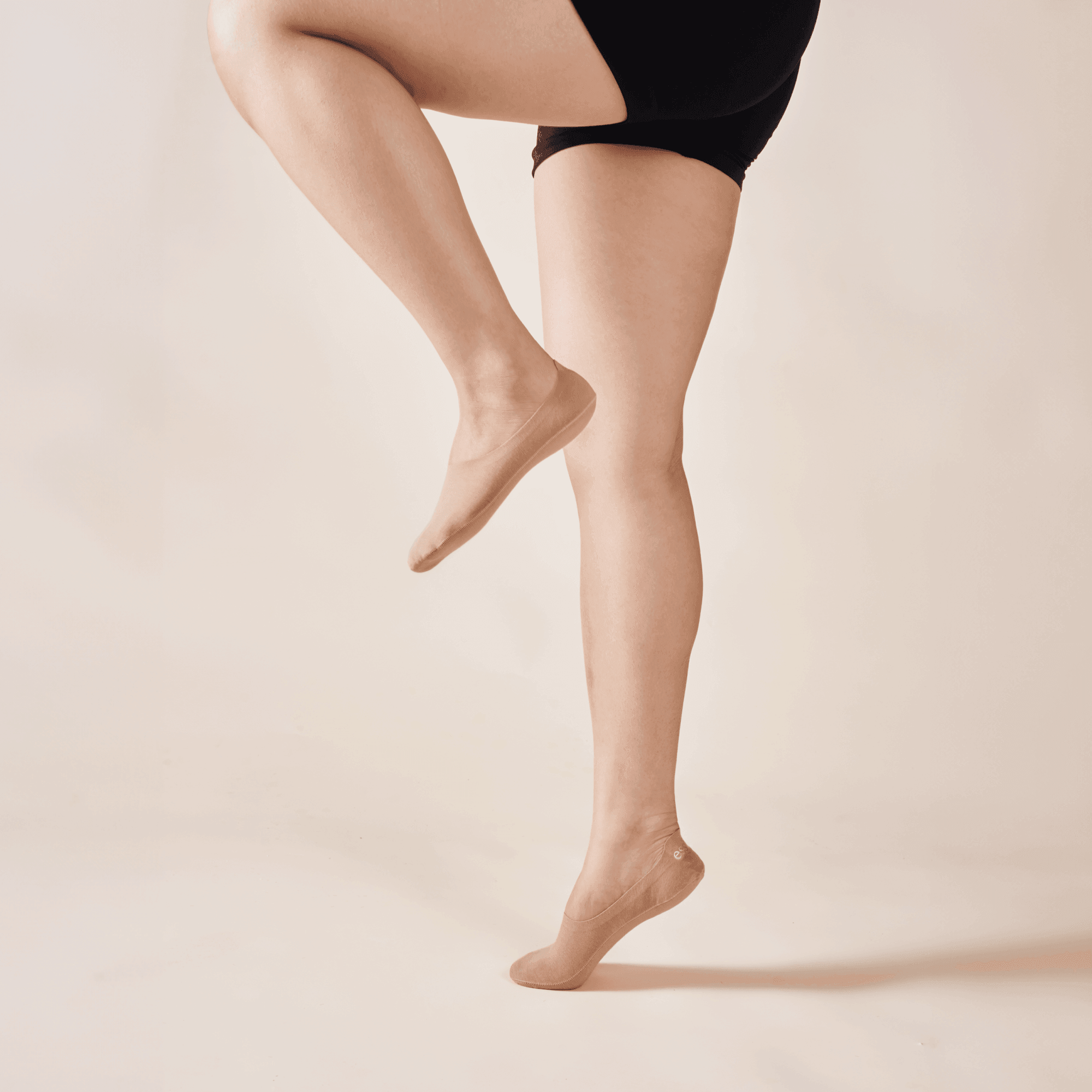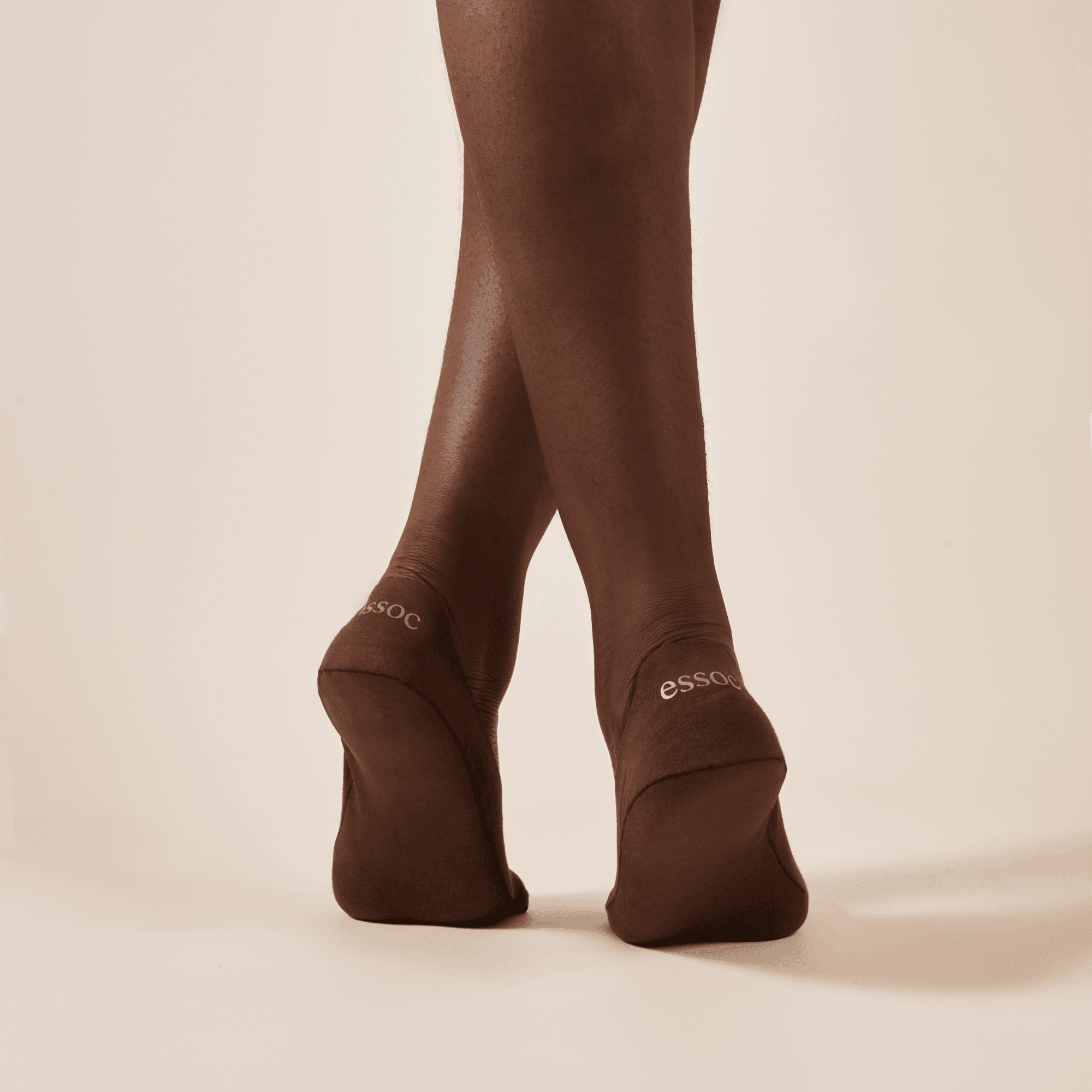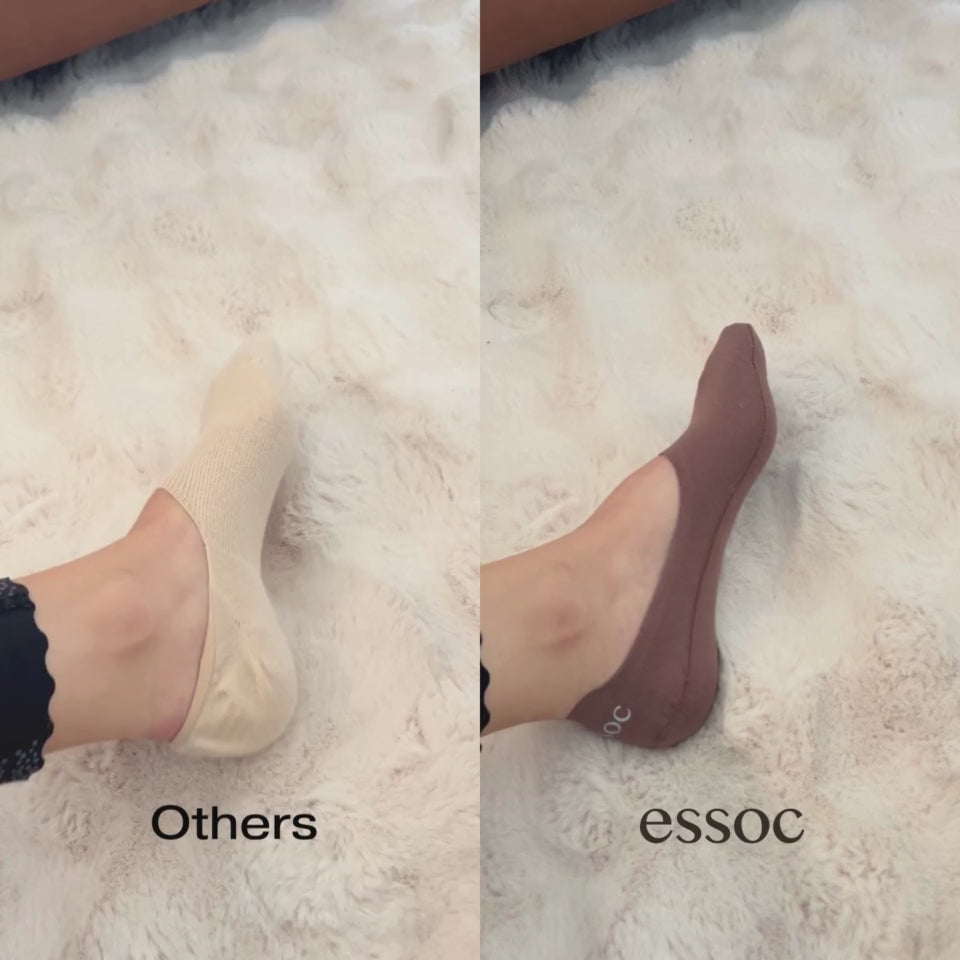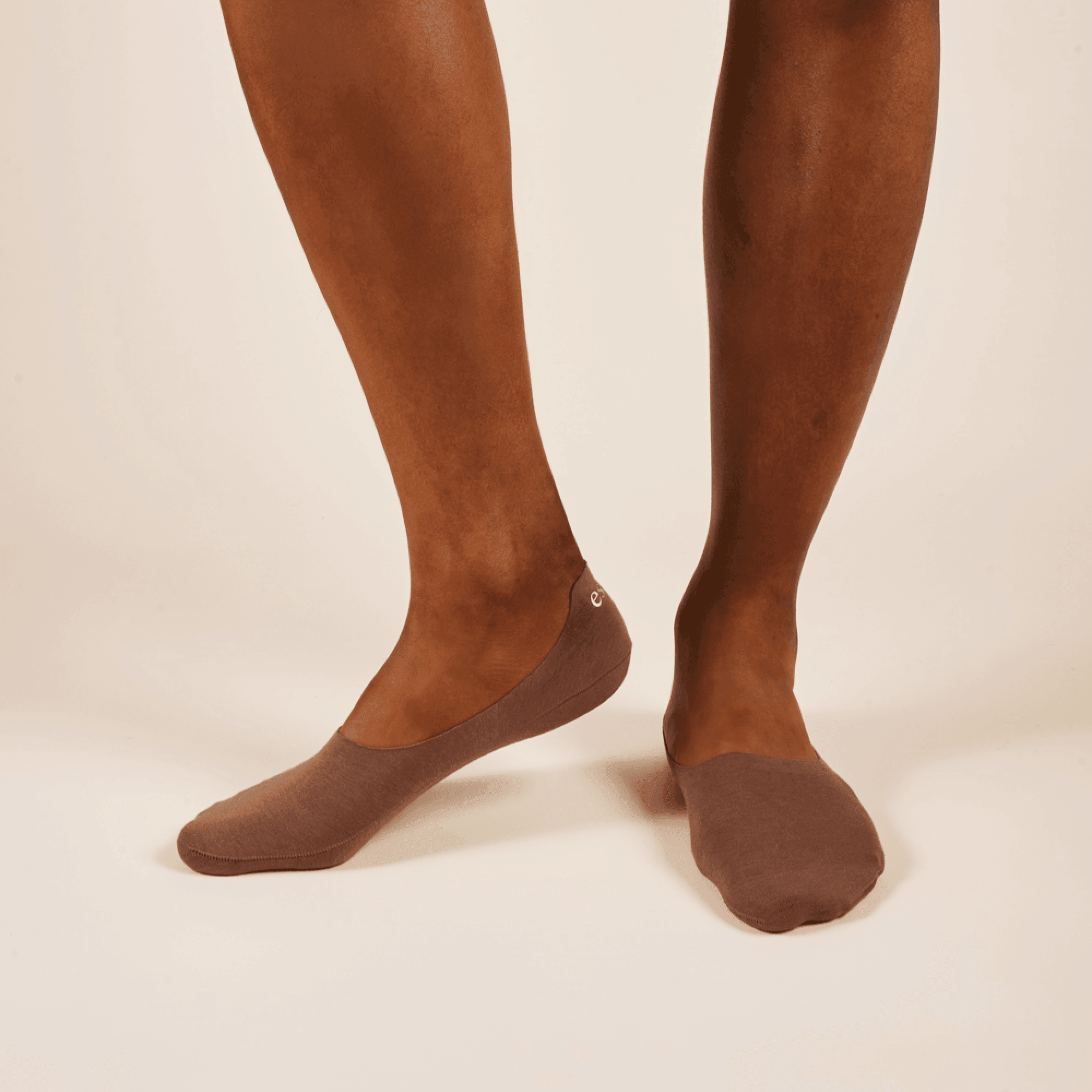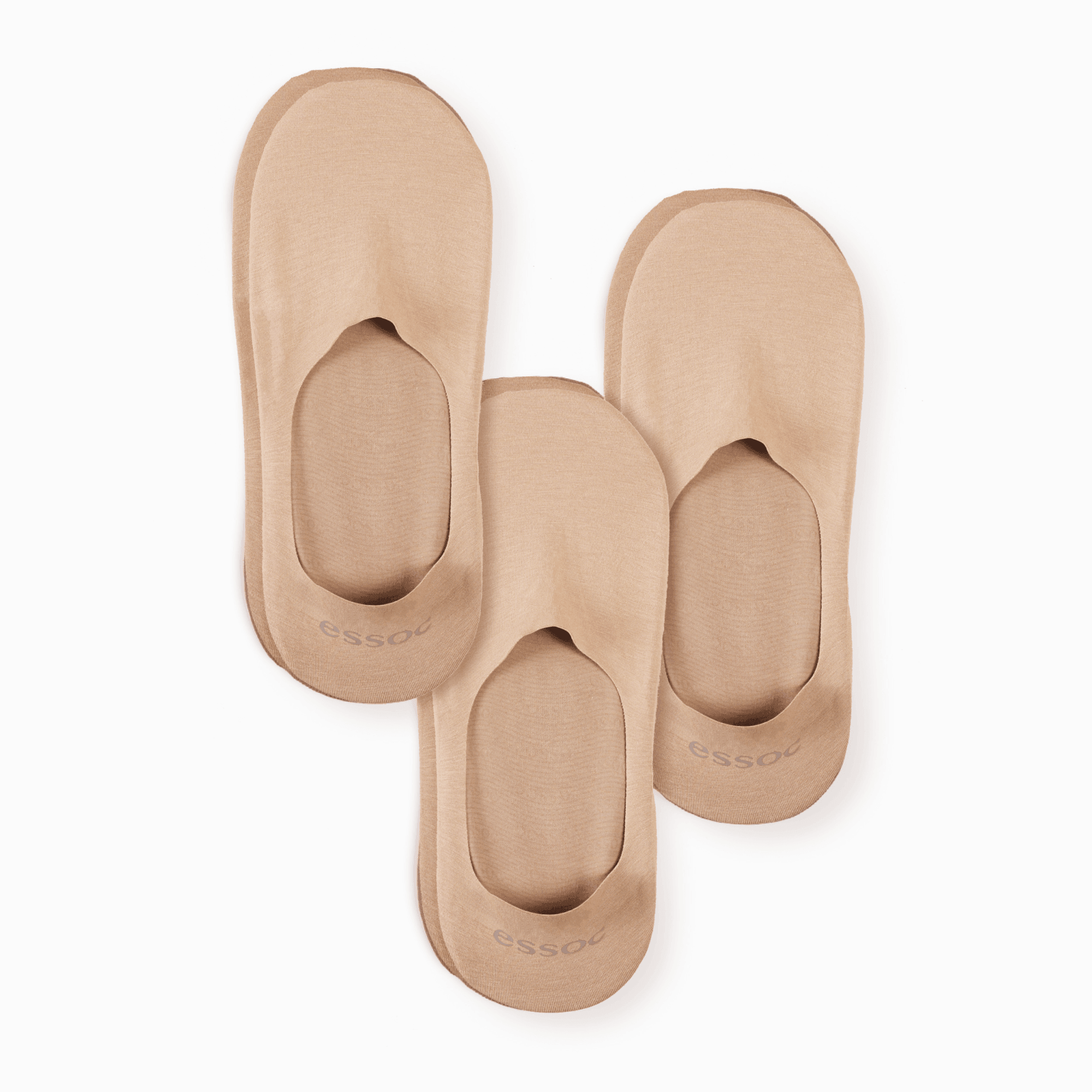As a child, he often heard his father emphasize the importance of having the right gear for sports. Trips to the store would leave him overwhelmed by endless choices, but one question always lingered—why did socks have to peek out from his shoes? That curiosity led to the discovery of no-show socks, a perfect blend of comfort and style for running, jumping, or simply relaxing. Keep reading to explore the world of no-show socks for athletic wear!
Key Takeaway
- No-show socks are designed to keep your feet comfy during workouts.
- They come in different materials to help with sweat and odor.
- A good pair of no-show socks stays in place, so you don't have to worry!
What Are No-Show Socks?
Credits: Dabl
A no-show sock isn’t just a low-cut sock. It’s designed to stay put while remaining invisible. The cut is precise—too high, and it peeks out, too low, and it slides off. Most no-show socks have a curved shape to follow the foot’s natural form. Some include silicone grips at the heel to prevent slipping, and others use compression in key areas for a snug fit.
They’re also made from breathable fabrics—cotton blends, moisture-wicking synthetics, or bamboo fibers. These materials keep sweat from pooling, reducing odors and discomfort. The fabric choice affects durability, stretch, and softness. Some feel plush, others ultra-thin. It’s all about preference.
The Benefits of No-Show Socks
Wearing no-show socks has some awesome advantages:
- Comfort: No-show socks provide cushioning in key areas like your heels and toes. This support helps keep your feet comfy during those long runs or intense workouts.
- Breathability: These socks are often made from breathable materials that wick away moisture, keeping your feet cool and dry.
- Style: With their low-cut design, they stay hidden under your shoes, allowing you to wear stylish sneakers without showing your socks. If you're looking for quality options, https://essoc.shop/ - no show socks offer a great combination of comfort and durability.
The Perfect Fit
One of the biggest frustrations with regular socks is they tend to slip down, especially during exercise. But no-show socks are designed to stay put! They often come with silicone grips or elastic bands to make sure they don’t slide off your heels.
Types of No-Show Socks
There are many types of no-show socks, and each has its special features.
Breathable No-Show Socks
Some materials suffocate the foot, trapping heat and moisture like a sealed plastic bag. Breathable no-show socks do the opposite. They let air flow, reducing that clammy feeling that builds up over the day. Lightweight fabrics like bamboo, modal, and fine cotton blends (often around 70% cotton, 25% polyester, 5% elastane) help keep feet cool.
Perforated designs—tiny mesh-like holes—add even more ventilation. In the thick of summer, when asphalt radiates heat and the air feels heavy, breathable no-show socks make a difference. No one likes peeling off damp socks after a long walk.
Moisture-Wicking No-Show Socks
Sweat is inevitable. Feet have over 250,000 sweat glands, making them one of the most active parts of the body in terms of moisture production. And once sweat gets trapped? It creates the perfect breeding ground for odor-causing bacteria. Moisture-wicking no-show socks combat this problem by pulling sweat away from the skin.
Synthetic fibers like polyester and nylon excel at this, often blended with spandex for stretch. Some versions use silver-infused fabric, which helps prevent bacteria buildup. Others have moisture-activated cooling technology—fabrics that react to body heat and sweat, keeping feet drier longer. Gym-goers, runners, and anyone who wears shoes for extended periods benefit from this design.
Cushioned No-Show Socks
There’s a clear difference between standing on a hard surface barefoot and standing with a layer of cushioning underfoot. That’s the purpose of cushioned no-show socks. Extra padding—usually concentrated in the heel and toe—absorbs shock, reducing the impact of each step.
The thickness varies: some brands add only a slight layer of reinforcement, while others create plush, almost memory foam-like footbeds. Runners favor these socks for long-distance training. People who work on their feet all day appreciate the added comfort. Even those breaking in stiff shoes find relief in the extra padding.
Materials Matter
No-show socks come in various materials, and each has its benefits.
- Cotton: Classic. Soft, breathable, comfortable. Great for everyday wear. But—holds moisture. Feet sweat? These might not be your best bet. A good pair? Around 70-80% cotton, blended with spandex or polyester (adds stretch, durability). Look for reinforced toes, heels. More wear, less tear.
- Bamboo: Feels fancy. And it's eco-friendly. Bamboo fibers wick moisture, resist odor - similar to Essoc's revolutionary LENZING™ Modal blend that combines comfort with sustainability while keeping your feet fresh all day. They keep feet cool—big plus for yoga, Pilates. Often mixed with cotton (50-60%) or nylon (for strength). Downside? Can pill over time. Wash on gentle. Air dry.
- Wool: Warm but breathable. Surprising? Wool regulates temperature. Merino wool? Even better—finer, softer, less scratchy. Perfect for cooler weather, travel. Often blended (30-50%) with synthetics. Helps shape retention, longevity.
- Nylon and Spandex: Not just stretch. These give socks structure. High-performance pairs? Mostly nylon (60-80%), with spandex (5-10%). Thin, snug fit. Best for running, training. Some even have compression zones—boost circulation, reduce fatigue.
Choosing the Right No-Show Socks
When it comes to picking the best no-show socks for your needs, consider a few key factors - or simply save time with Essoc's perfectly engineered designs that have already optimized these elements for you.
Activity Type
Some people dont think about socks much, but they should. The right pair can make or break comfort. No-show socks arent just about looking good—theyre about function. Different activities need different socks, simple as that.
- Running: Lightweight, moisture-wicking fabrics (like nylon blends) work best. Mesh panels help with airflow.
- Gym Workouts: Cushioning matters here. Look for padded soles, reinforced heels, and arch support.
- Casual Wear: Soft cotton blends with a touch of spandex stay put without feeling tight.
- Dress Shoes: Thin, seamless socks with silicone grips keep things sleek and comfortable.
Size and Fit
Theres nothing worse than socks that slide down (or ones that cut off circulation). No-show socks should hug your foot—not too loose, not too tight. The fit matters.
- Shoe-size based socks: More precise, less guessing. Brands often list exact sizes (e.g., 6-8, 9-11).
- Compression zones: A bit of elastic arch support keeps socks from twisting or slipping.
- Heel tabs: Some brands add extra fabric at the back to prevent chafing.
Material also affects fit. Cotton feels soft but stretches out. Polyester holds its shape but traps heat. A blend? Best of both worlds. Always check the fabric breakdown (typically 60%+ synthetic for durability).
Style and Color
Function first. Style second—but its still nice to match. No-show socks come in different cuts:
- Low-cut: Sits just below the ankle. Works with sneakers.
- Ultra-low: Barely peeks out. Best for loafers or slip-ons.
- Liner socks: Super thin. Designed for dress shoes.
Color depends on use. Black hides stains. White feels fresh. Gray blends with everything. Some brands add patterns or logos, but minimal designs stay versatile. The right sock? It disappears into the background—while keeping feet comfortable.
The Perfect Pair for Every Athlete
No-show socks can be used for various activities, from running to yoga, and even hiking. Here’s how different types can work for you:
Running
Feet hit the pavement, over and over. Every impact sends a tiny shock through the bones, tendons, muscles—runners know the feeling. The wrong socks make it worse.
For distance runs, a breathable blend (polyester-spandex is common) keeps sweat from pooling. Moisture-wicking fabric helps, but ventilation zones—tiny mesh sections on the top—make a difference too. Some brands stitch in compression bands around the arch, giving a snug fit without cutting circulation.
Cushioning is another factor. Extra padding in the heel and forefoot absorbs shock, but too much bulk can make shoes feel tight. A thin, targeted cushion works best. Look for pairs labeled "medium cushion" or "lightweight performance."
Yoga
Balance, grip, movement. Yoga isn't just about flexibility—it's control. Socks can help, or they can ruin a pose.
Material matters. Bamboo and cotton blends breathe better than synthetic fabrics. They absorb sweat without feeling damp. But too much absorption? That’s a problem. Damp socks stretch, slip, lose shape.
Grip is key. No-show yoga socks often come with silicone dots on the sole, creating traction on smooth floors. Some have separate toes (like gloves) for better flexibility. Others use arch compression for support.
What about going barefoot? Some yogis prefer it, but socks add a layer of hygiene, especially in studios with shared mats.
Hiking
Cold mornings. Rocky trails. Sweat, dirt, miles ahead. The wrong socks turn a hike into a blistered mess.
Wool wins. Merino wool, specifically. It regulates temperature—warm when it’s cold, cool when it’s hot. Plus, it's naturally odor-resistant (helpful on multi-day treks).
Padding helps too. Look for reinforced heels and toes. These high-impact zones wear down fast. Without reinforcement, holes appear before the hike’s over.
Fit matters. Too tight, and circulation suffers. Too loose, and friction leads to blisters. A snug-but-not-tight fit is best. Elastic arch support prevents slipping inside the boot.
Tips for Finding the Right No-Show Socks
Finding the right no-show socks can be tricky, but here's a simple solution - Essoc's expertly designed no-shows that work beautifully with everything from sneakers to dress shoes, no guesswork required.
Read Reviews
Reading reviews can provide valuable insights from those who have already purchased and used the product. By examining customer feedback, one can gain a better understanding of the item's overall quality, comfort, and durability. Many reviewers share their personal experiences, highlighting both the strengths and potential drawbacks, which can help prospective buyers make more informed decisions.
Additionally, looking for patterns in multiple reviews can reveal consistent issues or benefits that may not be immediately apparent from the product description alone.
Try Different Styles
No one sock works for every shoe. Thin, barely-there socks work with dress shoes. Cushioned ones feel better in sneakers. A deep heel pocket helps in both cases. If they slip off mid-step, they’re useless.
- Dress Shoes: Ultra-thin, no padding, high-cut heel.
- Sneakers: Medium thickness, reinforced heel, arch support.
- Loafers & Slip-ons: Low cut, silicone grip, breathable fabric.
Some brands label socks as “invisible” when they peek out slightly. Checking product photos helps. A few companies list measurements—ideal. Anything over 1.5 inches from heel to ankle might show.
Check for Features
A good no-show sock does more than stay hidden. It fights odor, absorbs sweat, and holds up wash after wash. Some even use anti-bacterial fibers. Others add compression for a snug fit.
- Moisture-Wicking: Keeps feet dry, reduces odor.
- Reinforced Stitching: Increases durability, prevents holes.
- Seamless Toe: Eliminates pressure points, avoids blisters.
- Blended Fabrics: Cotton-poly blends last longer than pure cotton.
The best no-show socks disappear—not into shoes, but from thought. A good pair works so well, they’re never noticed.
FAQ
What are invisible socks for gym outfits and why should I wear them?
No-show socks or invisible socks for gym outfits are specifically designed to sit below your shoe line, giving the appearance of not wearing socks at all. They're perfect for athletic shoes with lower cuts or when you want a cleaner look with your workout clothes. These socks provide necessary protection against blisters and sweat while maintaining a streamlined appearance with your athletic gear. They create a barrier between your feet and shoes without disrupting your style.
How do low-cut socks for workout clothes differ from regular athletic socks?
Low-cut socks for workout clothes sit much lower on your foot than traditional athletic socks. They're designed to cover just your toes, ball of foot, and heel while remaining hidden inside your shoes. Unlike regular athletic socks that rise above your ankle, these hidden socks for athletic leggings complement your workout attire without disrupting your look. They provide the same benefits of sweat absorption and blister prevention while maintaining a sleek appearance with various athletic shoes.
What features should I look for in sport socks that don't show?
The best socks for athletic shoes that don't show should have several key features: a properly contoured heel cup, silicone grip strips to prevent slipping, breathable materials for comfort, and the right cut that stays below your shoe line. Look for moisture-wicking socks for athletic gear that pull sweat away from your skin. Anti-odor socks for sports apparel contain special treatments to minimize smell. The perfect invisible socks should feel like they're not there while providing all the protection your feet need.
Are thin no-show socks for exercise as durable as thicker socks?
Thin no-show socks for exercise can be just as durable as thicker options when made with quality materials. Lightweight socks for athletic performance often use advanced fabric blends that maximize durability while maintaining a slim profile. Many feature reinforced heels and toes to prevent wear-through at common friction points. While they may feel less substantial than cushioned socks for athletic comfort, thin styles are engineered to withstand intense activity while providing the minimal profile needed to stay hidden in athletic shoes.
What materials are best for no-show athletic socks?
The best materials depend on your activity type. Cotton no-show socks for workouts provide natural comfort but may retain moisture. Bamboo no-show socks for yoga offer sustainable breathability and natural antibacterial properties. Wool no-show socks for hiking regulate temperature even when wet. Synthetic options like nylon no-show socks for running and spandex no-show socks for training provide excellent moisture management and durability. For most athletic purposes, a blend of materials offers the ideal balance of comfort, moisture control, and durability.
How important is arch support in no-show athletic socks?
Arch support socks for athletic shoes can make a significant difference in comfort during extended workouts. This targeted compression helps reduce foot fatigue and provides stability inside your shoes. Many performance socks for athletic training include compression zones that improve circulation and reduce muscle vibration. For those with flat feet or high arches, proper support can help prevent discomfort during long training sessions. The best no-show athletic socks according to athletes often feature anatomical designs that cradle your arch effectively.
How do I prevent my no-show socks from slipping down during workouts?
Anti-slip socks for athletic activity solve one of the most common complaints about no-show styles. Look for stay-put socks for gym workouts that feature heel grip socks for athletic sneakers with silicone strips or dots inside the heel. Silicone grip socks for workout shoes provide friction against your skin to prevent movement. No-show socks that don't slip during workouts often have a properly contoured heel cup that hugs your foot anatomy. Socks for gym shoes that stay in place should feel slightly snug without being uncomfortable.
What's the difference between men's and women's no-show athletic socks?
Men's performance socks for running and women's performance socks for training primarily differ in sizing rather than features. Women's socks typically have a smaller heel pocket and narrower footbed to match female foot anatomy. Some brands offer gender-specific designs with targeted cushioning patterns based on typical pressure points. However, many top-rated no-show athletic socks are unisex with size ranges accommodating all wearers. The functional features - moisture-wicking, grip systems, and breathability - remain consistent across gender-specific designs.
Conclusion
In wrapping up, no-show socks for athletic wear are a fantastic choice for anyone who wants comfort and style during workouts. With the right pair, you can enjoy your favorite activities without the hassle of adjusting or worrying about blisters.
Experience the difference with Essoc's inclusive sizing and non-slip technology that will transform your workout experience. So next time you're gearing up for exercise, don't settle for ordinary socks - upgrade to Essoc and discover your new favorite workout essential!



